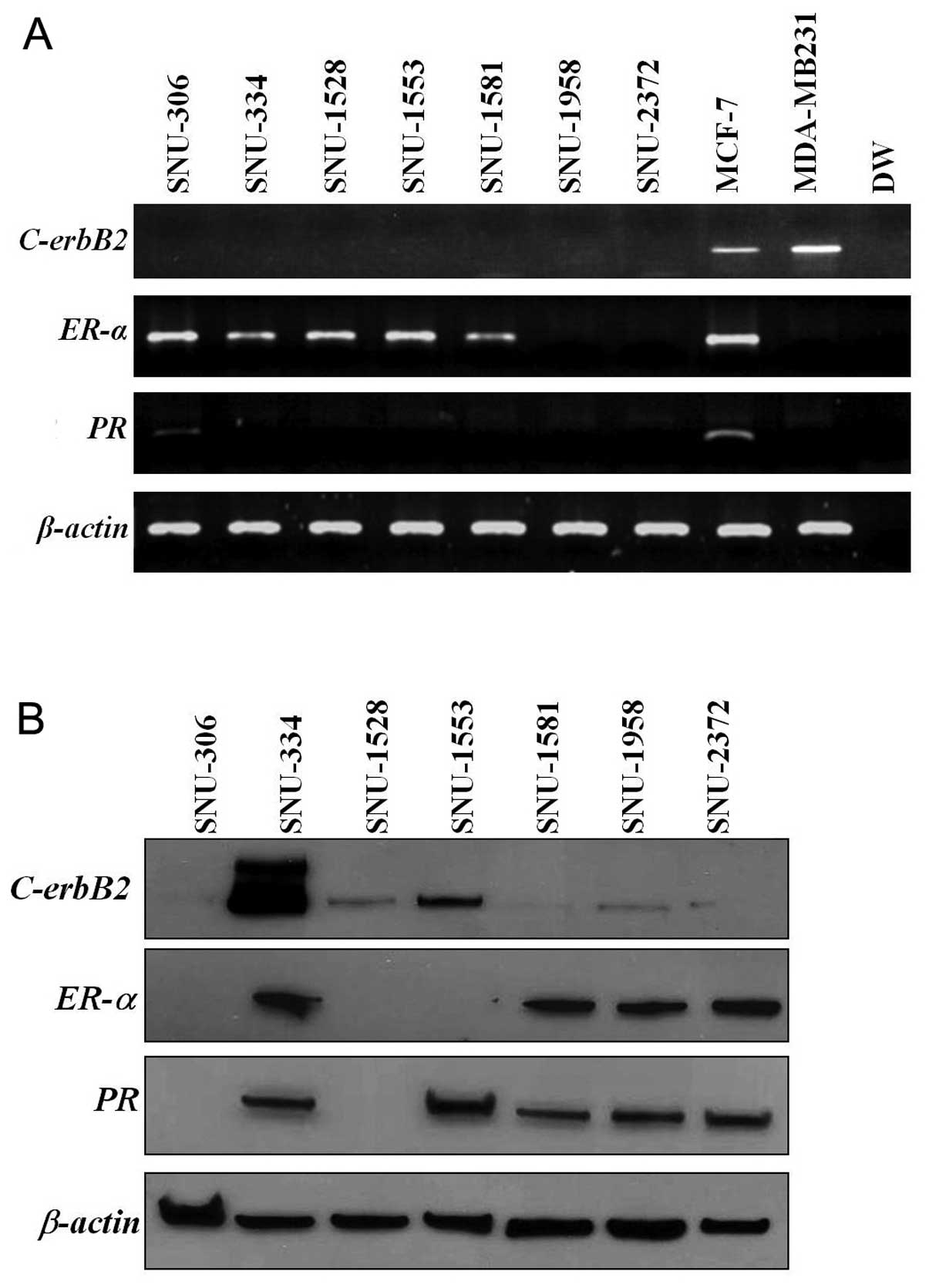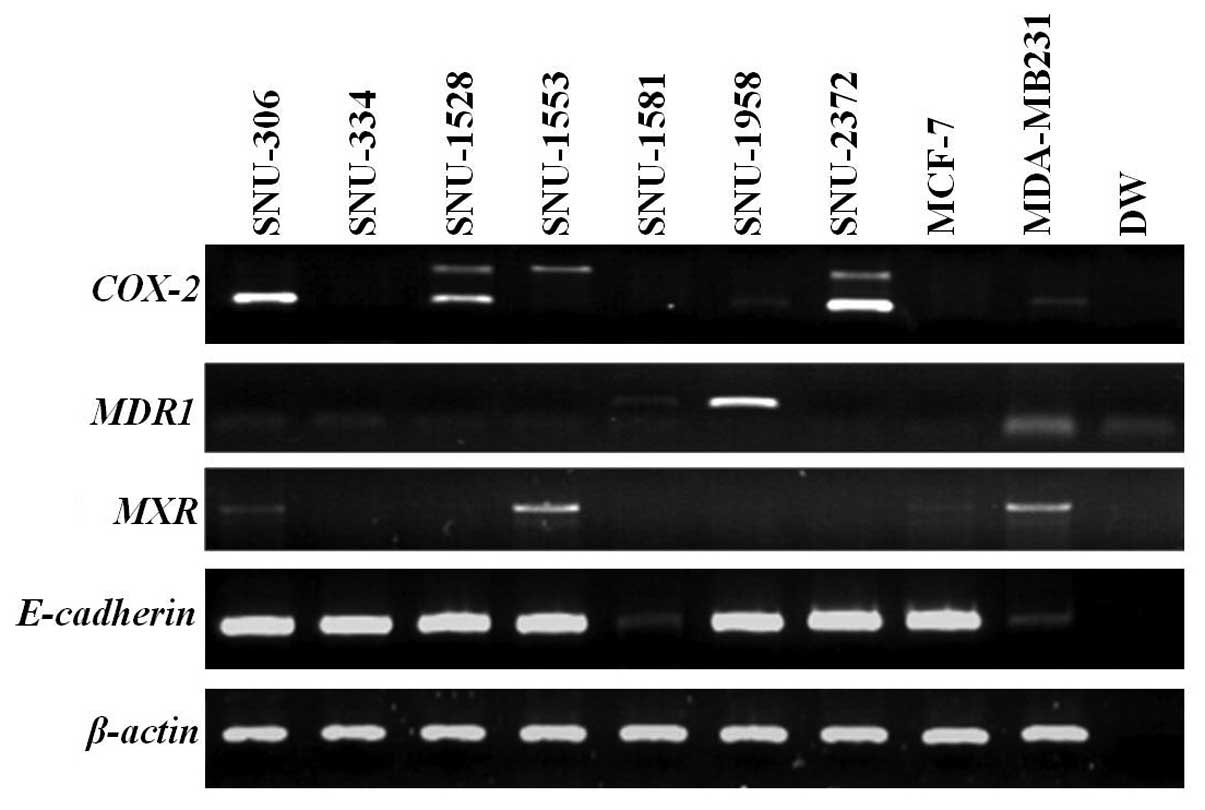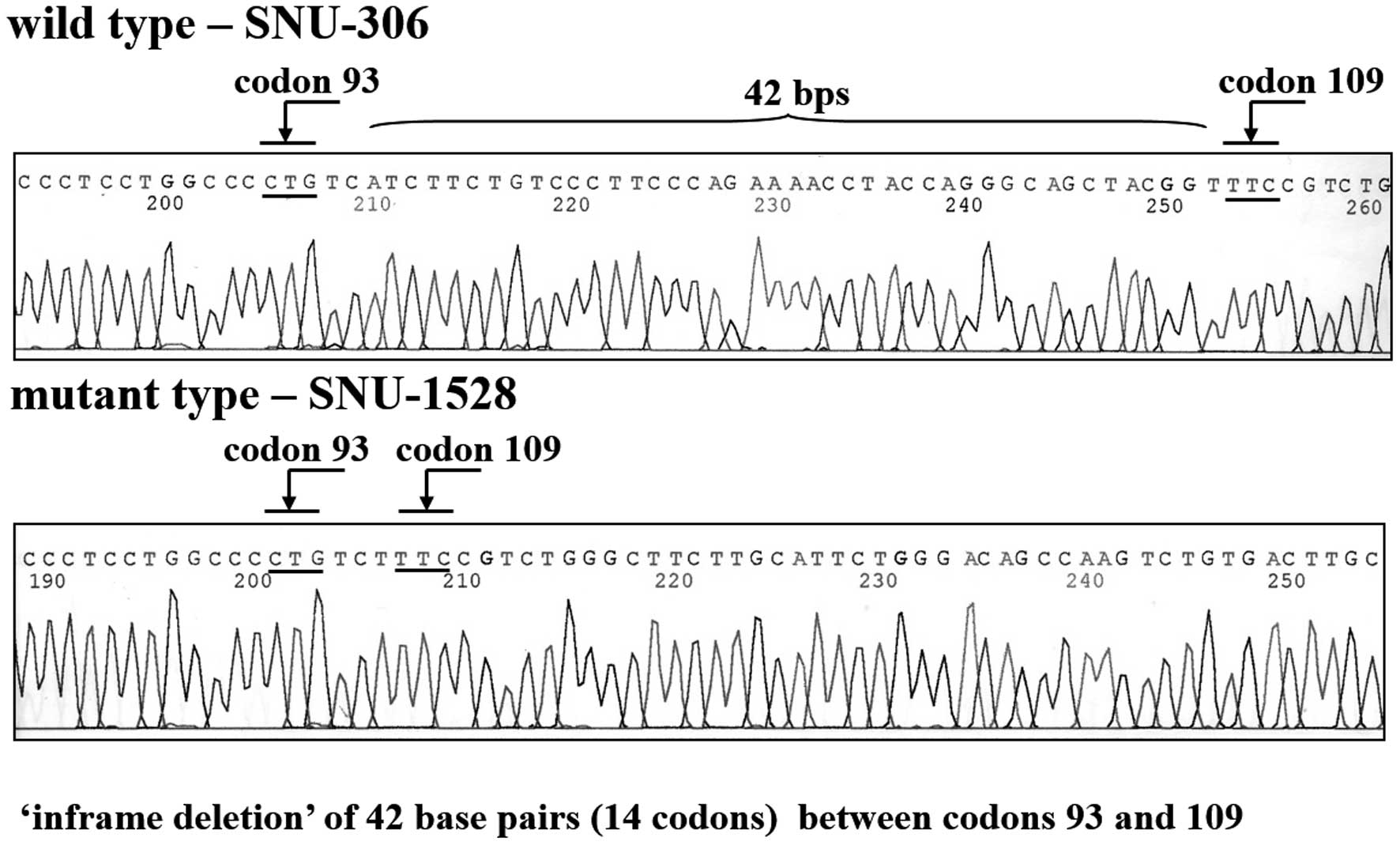|
1.
|
DeVita VT, Lawrence TS and Rosenberg SA:
DeVita, Hellman, and Rosenberg’s Cancer: Principles & Practice
of Oncology. Wolters Kluwer/Lippincott Williams & Wilkins;
Philadelphia, PA: 2008
|
|
2.
|
Neve RM, Chin K, Fridlyand J, et al: A
collection of breast cancer cell lines for the study of
functionally distinct cancer subtypes. Cancer Cell. 10:515–527.
2006. View Article : Google Scholar : PubMed/NCBI
|
|
3.
|
Gazdar AF, Kurvari V, Virmani A, et al:
Characterization of paired tumor and non-tumor cell lines
established from patients with breast cancer. Int J Cancer.
78:766–774. 1998. View Article : Google Scholar : PubMed/NCBI
|
|
4.
|
Lacroix M and Leclercq G: Relevance of
breast cancer cell lines as models for breast tumours: an update.
Breast Cancer Res Treat. 83:249–289. 2004. View Article : Google Scholar : PubMed/NCBI
|
|
5.
|
Burdall SE, Hanby AM, Lansdown MR and
Speirs V: Breast cancer cell lines: friend or foe? Breast Cancer
Res. 5:89–95. 2003. View
Article : Google Scholar : PubMed/NCBI
|
|
6.
|
Park JG, Lee JH, Kang MS, et al:
Characterization of cell lines established from human
hepatocellular carcinoma. Int J Cancer. 62:276–282. 1995.
View Article : Google Scholar : PubMed/NCBI
|
|
7.
|
Ku JL, Yoon KA, Kim IJ, et al:
Establishment and characterisation of six human biliary tract
cancer cell lines. Br J Cancer. 87:187–193. 2002.PubMed/NCBI
|
|
8.
|
Koh CS, Ku JL, Park SY, et al:
Establishment and characterization of cell lines from three human
thyroid carcinomas: responses to all-trans-retinoic acid and
mutations in the BRAF gene. Mol Cell Endocrinol. 264:118–127. 2007.
View Article : Google Scholar : PubMed/NCBI
|
|
9.
|
Takano N, Iizuka N, Hazama S, Yoshino S,
Tangoku A and Oka M: Expression of estrogen receptor-alpha and
-beta mRNAs in human gastric cancer. Cancer Lett. 176:129–135.
2002. View Article : Google Scholar : PubMed/NCBI
|
|
10.
|
Brys M, Wojcik M, Romanowicz-Makowska H
and Krajewska WM: Androgen receptor status in female breast cancer:
RT-PCR and Western blot studies. J Cancer Res Clin Oncol.
128:85–90. 2002. View Article : Google Scholar : PubMed/NCBI
|
|
11.
|
O-charoenrat P, Rhys-Evans PH, Archer DJ
and Eccles SA: C-erbB receptors in squamous cell carcinomas of the
head and neck: clinical significance and correlation with matrix
metalloproteinases and vascular endothelial growth factors. Oral
Oncol. 38:73–80. 2002. View Article : Google Scholar : PubMed/NCBI
|
|
12.
|
Melki JR, Vincent PC, Brown RD and Clark
SJ: Hypermethylation of E-cadherin in leukemia. Blood.
95:3208–3213. 2000.PubMed/NCBI
|
|
13.
|
Hase T, Yoshimura R, Matsuyama M, et al:
Cyclooxygenase-1 and -2 in human testicular tumours. Eur J Cancer.
39:2043–2049. 2003. View Article : Google Scholar : PubMed/NCBI
|
|
14.
|
Yang CH, Schneider E, Kuo ML, Volk EL,
Rocchi E and Chen YC: BCRP/MXR/ABCP expression in
topotecan-resistant human breast carcinoma cells. Biochem
Pharmacol. 60:831–837. 2000. View Article : Google Scholar : PubMed/NCBI
|
|
15.
|
Rajendra R, Gounder MK, Saleem A, et al:
Differential effects of the breast cancer resistance protein on the
cellular accumulation and cytotoxicity of 9-aminocamptothecin and
9-nitrocamptothecin. Cancer Res. 63:3228–3233. 2003.PubMed/NCBI
|
|
16.
|
Yoo BC, Hong SH, Ku JL, et al: Galectin-3
stabilizes heterogeneous nuclear ribonucleoprotein Q to maintain
proliferation of human colon cancer cells. Cell Mol Life Sci.
66:350–364. 2009. View Article : Google Scholar : PubMed/NCBI
|
|
17.
|
Kang MS, Lee HJ, Lee JH, et al: Mutation
of p53 gene in hepatocellular carcinoma cell lines with HBX DNA.
Int J Cancer. 67:898–902. 1996. View Article : Google Scholar : PubMed/NCBI
|
|
18.
|
Tokumo M, Toyooka S, Kiura K, et al: The
relationship between epidermal growth factor receptor mutations and
clinicopatho-logic features in non-small cell lung cancers. Clin
Cancer Res. 11:1167–1173. 2005.PubMed/NCBI
|
|
19.
|
Chen G, Gharib TG, Huang CC, et al:
Discordant protein and mRNA expression in lung adenocarcinomas. Mol
Cell Proteomics. 1:304–313. 2002. View Article : Google Scholar : PubMed/NCBI
|
|
20.
|
Wang G, Lai FM, Lai KB, et al: Discrepancy
between intra-renal messenger RNA and protein expression of ACE and
ACE2 in human diabetic nephropathy. Am J Nephrol. 29:524–531. 2008.
View Article : Google Scholar : PubMed/NCBI
|
|
21.
|
Fritz P, Cabrera CM, Dippon J, et al:
c-erbB2 and topoisomerase IIalpha protein expression independently
predict poor survival in primary human breast cancer: a
retrospective study. Breast Cancer Res. 7:R374–R384. 2005.
View Article : Google Scholar
|
|
22.
|
Shyamala G, Chou YC, Cardiff RD and Vargis
E: Effect of c-neu/ErbB2 expression levels on estrogen receptor
alpha-dependent proliferation in mammary epithelial cells:
implications for breast cancer biology. Cancer Res. 66:10391–10398.
2006. View Article : Google Scholar
|
|
23.
|
Swamy MV, Herzog CR and Rao CV: Inhibition
of COX-2 in colon cancer cell lines by celecoxib increases the
nuclear localization of active p53. Cancer Res. 63:5239–5242.
2003.
|
|
24.
|
Nassar A, Radhakrishnan A, Cabrero IA,
Cotsonis G and Cohen C: COX-2 expression in invasive breast cancer:
correlation with prognostic parameters and outcome. Appl
Immunohistochem Mol Morphol. 15:255–259. 2007. View Article : Google Scholar : PubMed/NCBI
|
|
25.
|
Hollstein M, Sidransky D, Vogelstein B and
Harris CC: p53 mutations in human cancers. Science. 253:49–53.
1991. View Article : Google Scholar : PubMed/NCBI
|
|
26.
|
Papadakis EN, Dokianakis DN and Spandidos
DA: p53 codon 72 polymorphism as a risk factor in the development
of breast cancer. Mol Cell Biol Res Commun. 3:389–392. 2000.
View Article : Google Scholar : PubMed/NCBI
|
|
27.
|
Dumont P, Leu JI, Della Pietra AC III,
George DL and Murphy M: The codon 72 polymorphic variants of p53
have markedly different apoptotic potential. Nat Genet. 33:357–365.
2003. View
Article : Google Scholar : PubMed/NCBI
|















